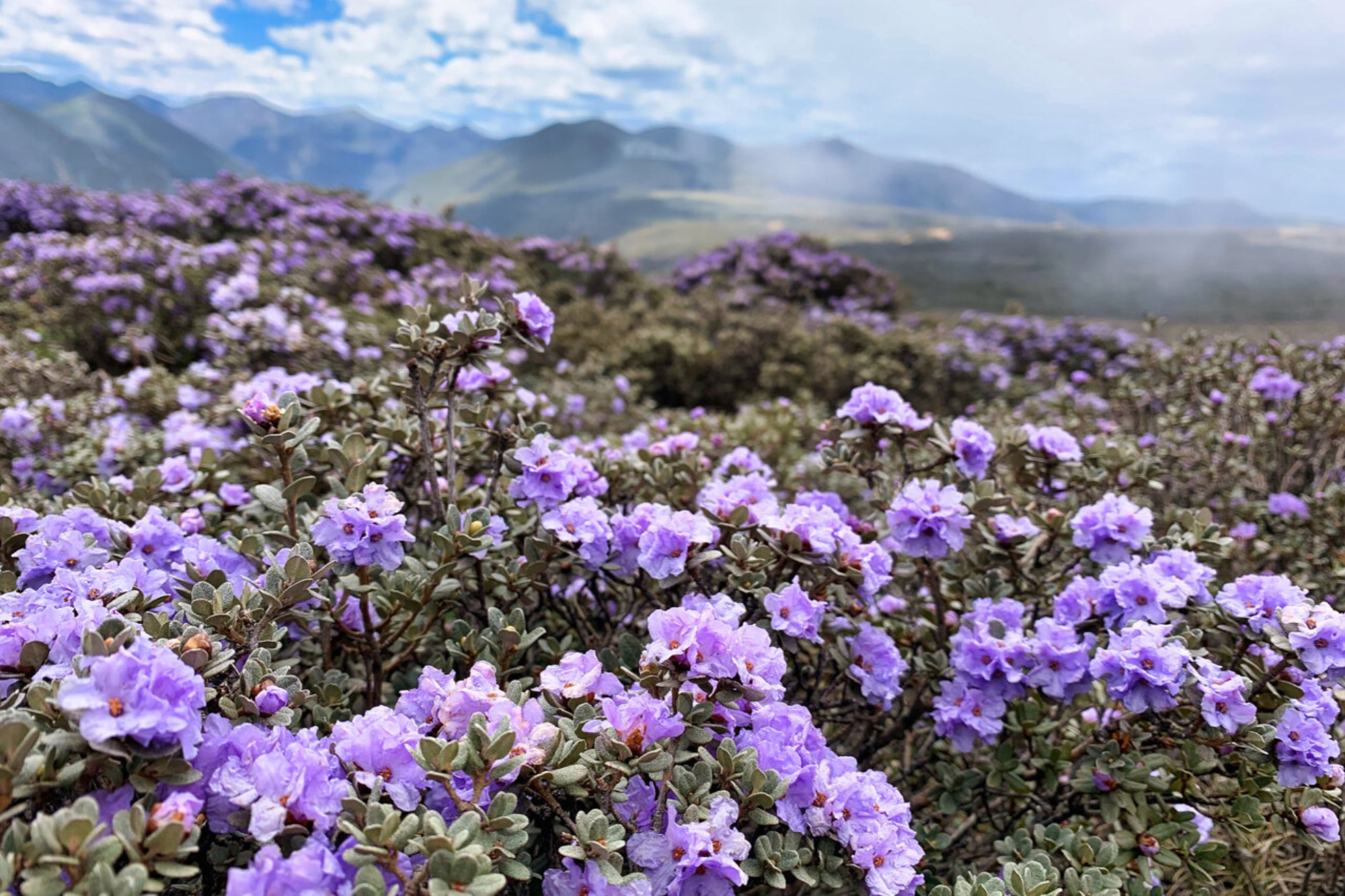

Evolution’s unofficial slogan of “survival of the fittest” might conjure up bleak images of animals fighting over scarce resources and adapting to best thrive in a changing and scary world where no tomorrow is guaranteed. But, sometimes evolution can be kind and even a bit cooperative. While animals like the Galapagos Island’s incredible tortoises and finches are typically the stars of evolutionary tales, some scientists are studying the plant world to better understand the process.
A study published today in the Journal of Ecology seeks to solve a floral evolutionary mystery in China. The meadows of the Hengduan mountains in southwestern China are next to to the Qinghai-Tibet Plateau. Scientists consider the area to be a biodiversity hotspot, or an ecologically fragile place with unusually high numbers of different species. Here, dozens of species of closely-related plants appear to live in harmony.
Rhododendrons are a genus of flowering shrubs that include bright purple and pink azaleas, the trumpet shaped elviira, and the blue peter. In the Hengduan mountains, “they form thickets along the sides of the mountains, it looks like an ocean of flowers,” said Qin Li, a postdoctoral researcher at the Field Museum and the paper’s lead author, in a press release.
A process called speciation is responsible for the diversity among the Rhododendrons here. Speciation occurs when a new species springs up from a common ancestor. Newly diverged species are expected to be much more ecologically similar than more distantly related plants, according to Rick Ree, a curator Chicago’s Field Museum and senior author of the study.
“There’s this basic idea in ecology of the niche, that a species’s lifestyle, like what it eats and how it fits into the environment, cannot be replicated in the same community. If two species with the same lifestyle are living in the same space, they’ll compete with each other, so either one or both of them will adapt to have different, non-overlapping lifestyles, or they’ll go extinct,” Ree said in a press release. “Since there are so many closely-related species of rhododendrons all living together in these mountains, we wanted to figure out how they were able to co-exist.”
[Related: Corpse flowers across the country are swapping pollen to stay stinky.]
To crack this case, the team studied the flowering patterns of 34 rhododendron species. As if the plants had a shared calendar, the team found that they burst into bloom at different points in the season, so that they don’t have to battle for the attention of pollinators.
What is puzzling about the unique genus of blossoms is that the closely-related rhododendrons here should be even more likely to be locked into a battle for resources, but there are multiple ways for them to adapt to co-exist. “They can become very different in terms of their preferences for soil, light, and moisture, very basic physiological functional traits. They can also evolve differences to reduce this potential for cross pollination or competing for pollinators. That would be manifested through differences in flower shape, size, or color, or could be manifested in when they make their flowers available for pollinators,” said Ree. “By partitioning that timeline, they can reduce their chances of wasting their pollen and the resources that go into reproduction.”
[Related: Cacao growers are bugging out about our chocolate supply.]
According to the study, these evolutionary strategies help explain why the rhododendrons hadn’t driven each other to extinction over time.
“Going in, we had a hunch that timing would be important, but we weren’t super certain,” Ree said in the release. “It’s kind of conspicuous that there’s a long season where you can see flowers in the Himalaya region—there are some species that put out striking blossoms against a backdrop of a field of snow, and others that wait till the end of the summer. Our analysis of the data confirms that suspicion.”
Confirming the timing of the bloom schedule will be key to also better understanding the threat that these plants face from climate change. According to Ree, there is evidence that climate change is affecting flowering times, causing declines and extinctions.
“The question is, how are plant communities around the globe going to respond? Weather is part of what signals them to blossom, and since climate change affects the weather, it’s likely to shift that competitive landscape,” Ree said in the release. “When the environment changes, species have three choices: you move, you adapt, or you die. Climate change is accelerating that dynamic.”
